/Dialogue | Reading Time: 19 minutes
From Founding to Closure
A Conversation on Iran’s Migration Observatory
Bahram Salavati | June, 2025
© Background Photo by Behnam Sedighi
ISSN 2818-9434
We’re glad that you accepted our invitation for this interview. We had previously shared a few questions with your colleagues, along with a note about the topic of this issue. We were eager to learn more about the founding goals and vision of the Observatory at the time of its establishment, and the kinds of activities it carried out.
BS: Thank you for the note and introduction to your journal and the questions you sent in advance. Some of the people who were following the Observatory might not be aware that it is shut down. We’ve tried to keep the website active—at times even covering the costs personally—but no new content has been added over the past two years. In fact, the Observatory now belongs to the past, though I believe the work it did had an impact and helped lay a foundation for more serious engagement with migration issues in Iran. I hope to offer a thorough explanation of its work during our conversation.
We are interested in learning how the Observatory was originally established. Was its founding connected to the discourse surrounding the “young elite flight” and the emigration of dissident youth following the end of the reform era? How did you establish it as a policy-oriented research institute, why at Sharif University?
BS: You know, we don’t actually have an academic discipline dedicated to migration studies in Iran. The absence of such a field in our universities—even within Iranian Studies—is a significant gap. We lack an institutional setting that, whether disciplinary or interdisciplinary, quantitative or qualitative, academic or policy-oriented, that can consistently produce knowledge. I believe this is a crucial point that deserves serious attention. We might see the launch of a migration studies program at Allameh Tabataba’i University in the coming year, thanks to the efforts of a few colleagues, including Dr. Saeedi. The University of Tehran is also working to establish a diaspora studies program. This reflects the growing recognition of the importance of the field. Still, even if such a program were to be launched today, I believe it would take at least a decade for it to fully bear fruit—because training researchers and scholars, building a minimum critical body of literature, and producing longitudinal, sectional, or cross-sectional data all require time. The training and preparing teaching materials alone, would require three to four years. We faced precisely the same challenges at the inception of the Observatory. We had been working since 2018 to publish an annual report, but data collection and preparation were not completed until 2020. Over the next two years, we continued to improve the quality of these reports, but the Observatory was suspended suddenly, and all staff were laid off in September 2023. By March 2024, the building and equipment were officially taken from us.
Since then, I have followed more closely the work of Iranian Studies centers around the world, particularly their research on emigration from Iran. We have a highly educated and widely dispersed diaspora globally. Some of their researchers visited the Observatory, and we exchanged ideas and research. However, despite the existence of 40 to 50 Iranian Studies centers worldwide, their scholars have yet to establish a fully-fledged academic discipline dedicated to this field—one that consistently develops and sustains this line of inquiry. As a result, a significant epistemological and research gap remains.
Do you mean that the establishment of the Observatory was driven more by a consensus within government and technocratic circles to curb the migration of educated youth—or the so-called brain drain—rather than by academic or university-led curiosity to study migration?
BS: Yes, exactly. That’s why the political developments of the 2010s are so important to analyze. The election of President Rouhani marked a significant moment, especially following the [conservative] administration that had been in power since 2005 and the mobilization of 2009 against it. His government represented something of a political renaissance. With its formation, a wave of hope spread among Iranians, both inside the country and abroad. This culminated in the nuclear agreement with the West (JCPOA), which created a sense of opening in the system—a reconnection with the world and the established global order. Some members of the Iranian diaspora became interested in engaging with Iran in the new conditions. Dr. [Sourena] Sattari’s role as Vice President for Science and Technology—also head of the National Elites Foundation (Bonyad-e Meli-e Nokhbegan)—was also instrumental in facilitating these connections. As for myself, someone who had been working in Europe on global labor markets and human capital mobility, I was drawn back to Iran during that moment of political and social optimism. I took up a postdoctoral position at Sharif University, where one of the most pressing questions—then and now—was the issue of talent mobility.
A convergence of political and social developments during that decade—along with the policies of a new administration whose motto was “Prudence and Hope”(tadbir va omid)—brought renewed attention to the question of why Iran fails to benefit from the capacities of its talented diaspora. My postdoctoral research at Sharif University, which included 425 interviews with members of the Iranian diaspora, produced notable results. Together with related government initiatives, it helped lay the groundwork for organizing meetings with Iranians abroad. Yet, we lack theory to guide practice in this area—or even solid policymaking frameworks. All we knew was that we wanted to engage with the diaspora. The idea itself dates back to the Ahmadinejad era, when the Supreme Council of Iranians Abroad was established and the so-called “Iranian-Islami School” (Maktab-e Irani-Islami) [1] was introduced as a framework to justify calls for the diaspora’s return. This approach was purely instrumental and mechanical, treating the diaspora as a tool to be used in times of need—when the country was in crisis. I believed if we don’t understand the root causes of why Iranians were leaving the country, we wouldn’t be able to understand the roots of their engagement or return either—because these are two sides of the same coin. My research at Sharif University focused on this issue, and its findings were well received by both the academic community and those engaged in policy research and policymaking. This reception opened the doors of policymaking offices to me and created an opportunity to advocate for taking migration studies seriously as a field of inquiry.
We also needed to reach a critical mass in terms of diaspora returnees in order to even raise the issue effectively. I believe that in 2014 or 2015, fewer than 100 people had returned to Iran [through Bonyad-e Meli-e Nokhbegan]. By 2016, that number had increased to 500, and then to around 600. So that initial core group became important. Gradually, I took on a consultative and research-oriented role for Dr. Sattari’s office. At the time, there was a widespread but incorrect assumption that Iran ranked first in the world in terms of brain drain—a claim based on flawed statistics and calculations. That misconception had even become the basis for several graduate theses and postdoctoral projects. We began refining these conceptual frameworks, and over time, the government became convinced that migration studies are not dangerous—and can even be useful, if only for propaganda or political purposes.
We published Iran’s first migration yearbook using a combination of limited domestic data and more credible international sources. This became a turning point. I published this at the Graduate School of Public Policy at Sharif University, where evidence-based policymaking was the dominant approach. In the yearbook, we tried to convert all the available data into evidence for policy decisions and to strengthen the idea that return migration could be seen as an opportunity. The report gave policymakers a concrete and accessible example showing that, if they trust researchers and academic institutions, serious research on key political and policy issues can be carried out. In the following years, as the second and third editions of the yearbook were published and the work matured, it became a reference point and a model in other policy areas. It even sparked a wave of new observatories in the country—for example, the Economic Observatory at the Ministry of Economy, aimed at informing policy decisions.
But by late 2019, the honeymoon period of the JCPOA had ended. Economic problems showed their face, and widespread protests [the 2019 riots in major cities] erupted. The narrative around return migration shifted dramatically. In August 2020, when we published the first yearbook, we also released a special issue for International Migrants Day. In the editorial, I discussed the concept of “mass migration” in the context of Iran and described the trend away from balanced migration—highlighting how this shift was driven by accumulated socio-economic pressures and the COVID-19 pandemic, which had compressed migration like a coiled spring. It was a sobering assessment.
We had warned government officials and the medical community about the migration of doctors and nurses in early 2020. The Observatory’s work was not merely descriptive of the past—it aimed to use current and historical data to generate evidence-based foresight. Ten months later, the then-president of the Iran’s Medical Council publicly acknowledged that the country was facing significant outmigration of healthcare professionals. Iranian society was on the brink of entering a phase of mass migration, and by late 2021—and especially 2022—it was as if the spring suddenly uncoiled. Of course, there was resistance to acknowledging this shift. Around the same time, the team at Stanford University, led by Pouya Azadi, published Iran Brain Drain Report, which addressed similar issues. In the editorial note of that year’s migration yearbook, I briefly referenced these signs, warning that a storm was on the horizon. From 2021 onward, the second phase of the Observatory’s work began.
Before proceeding to the next phase, let us revisit the question of how migration discourse was formed during this initial stage. You noted that the Observatory was originally established with the idea to engage with “diasporic elites” to encourage them to return. Later, the focus shifted toward preventing their emigration in the first place. Both goals were based on the assumption that migration from Iran exhibited unusual dimensions—that is, the post-revolutionary socio-political conditions had intensified the broader dynamic of young talent and technical experts seeking better life opportunities abroad. These exceptional conditions placed Iran among the top ten countries in terms of brain drain. Had any comparative studies examining emigration rates per capita confirmed this claim? And what strategies might be implemented to mitigate this trend?
BS: You see, when I said that migration studies don’t exist as a formal academic field in Iran, that also means there is no standardized statistical framework for it. There may be some qualitative or even quantitative studies done on particular groups—say, Olympiad medalists at a university—but these are not generalizable. As far as I know, we still lack an authoritative statistical reference for migration in Iran, and we remain significantly behind in this area. This is one of the key points I hope to articulate in this interview: the research gap between Iran and the rest of the world on migration is substantial. Despite ongoing efforts—and even after gaining the state’s trust by proving that migration research does not pose a security threat—accurate and reliable data remain unavailable.
Let me share a recent example that highlights the challenges we face in accessing reliable migration data. I was recently invited to serve as an advisor and observer on a research project at the National Elites Foundation, which aimed to estimate the migration of Olympiad participants using data from the Passport Office. Due to limited access to data, the researchers had to rely on proxy indicators—such as defining emigrants as those who had spent at least 200 out of 400 working days outside the country. At the Observatory, we eventually secured access to passport data after a long process of five to six months of back-and-forth. The Excel files we received were disorganized and required extensive cleaning and restructuring. It took nearly a year to extract even the most basic information. Following the end of the Rouhani administration and the departure of Dr. Sattari, the entire project was ultimately abandoned.
We tried to introduce proxy indicators to track migration patterns—such as the number of requests from universities to release official transcripts and degree verifications for use abroad, or enrollment in specific language courses, which often signals an intention to migrate. However, Iran lacks an integrated “operating system” for such analysis: there is no independent research center capable of systematically collecting and analyzing these indicators without interference from this or that authority or office. In the Observatory’s final year, we developed a draft statistical framework for migration and proposed a protocol for data integration. We argued that disparate datasets—such as flight records, passport data, employment and payroll tax records—must be layered to construct a coherent picture of migration. Even integrating social media data, such as LinkedIn profiles, is technically feasible. A comprehensive understanding of migration requires the convergence of registry data, survey data, social network data, and other complementary sources.
The Observatory was not intended to produce primary data—that responsibility lies with institutions such as the Statistical Center of Iran, the Student Affairs Organization, and the National Elites Foundation. But to get around the data vacuum, I took the initiative to design and implement surveys using online platforms. We published the results with full transparency, clearly outlining the survey structure, methodology, dates, platform used, and the characteristics of the respondent group. While some fellow researchers criticized these surveys as non-generalizable, a sample of 13,000 participants provides valid insights for the population surveyed. Moreover, these surveys proved useful in identifying emerging trends.
The first and most important achievement of these surveys was that they created a space to talk publicly and formally about migration. I believe that researchers should not allow political considerations to compromise their work. Of course, such work can have consequences—diaspora researchers may face travel restrictions, and those based inside Iran may experience pressure. But if these considerations paralyze all of us, meaningful progress in applied or policy research will remain out of reach. I want to underscore this point: without data sharing—between domestic institutions and scholars working in Iranian studies abroad—we cannot move forward. Within the country, data is often scarce, sometimes poorly analyzed, and too rarely made accessible.
I’d like to ask a question about your target groups in migration studies. What’s your take on terms like “elite migration” and “brain drain” in the Iranian context? These labels seem to come from a discourse that is already highly politicized. It appears that the very conception of the Observatory was shaped within this politicized framework. As someone who has worked in academia, how do you see the impact of this kind of pre-politicization? I get the sense that unpacking these terms could offer insights not only into the lack of reliable data on migration but also into the state’s broader approach to managing and framing the issue.
BS: I believe that when we examine the underlying causes of Iranian migration, we find that it has always been political at its core. From the very first major wave of emigration after 1979, the driving forces and motivations were primarily political. Of course, there have been smaller communities of Iranian labor migrants or merchant diasporas, often driven by economic motives. Iran’s historical position along the Silk Road created a certain mobility that lasted for centuries. But the turning point in modern Iranian migration was 1979, when between one and two million people left the country. That was a massive exodus, and it placed the diaspora under a politicized gaze, shaping how they were perceived and engaged with. We are still dealing with that trauma, and it continues to shape perceptions to this day. So yes, politics matters—especially when it comes to the reasons behind migration. Of course, migration is also shaped by economic, social, and cultural factors, and depending on the period, one of these factors might dominate. But I can say with certainty that after 2009, the political dimension of migration became highly pronounced. And in 2022, it was even more so. In contrast, during the 2010s, economic and social drivers became more prominent. Today, I would say the social aspects are more dominant than the political ones, because we’ve moved beyond the immediate post-2022 political moment. The second issue is the political perception of migration studies themselves. At one point, researchers abroad dismissed us as “state-affiliated,” while inside Iran, we were sometimes derisively referred to as “migration celebrities.” After 2022, these attitudes shifted dramatically, and even the limited academic support we had within the country quickly vanished.
Our question concerns the factors that led you to focus specifically on elite migration, rather than migration more broadly. The emphasis on elite migration seems to emerge from a particular political discourse. Where did this discourse around “brain drain” come from, and what have been its consequences? For example, since the 1990s, Iran has seen the migration of low-skilled laborers to countries like Japan and Taiwan. Did the Observatory consider such groups—or other social groups—into account, or was its scope limited to elite migration?
BS: In fact, a key contribution of the statistical yearbooks was to highlight the pressures of forced migration —pressures that the Scientific Deputy or the National Elites Foundation often paid little attention to. We didn’t have any institutional ties with the Elites Foundation and deliberately tried to remain based at Sharif University in order to maintain our independence of thought and judgment. We attempted to examine different dimensions of migration—though cautiously, given the many constraints we were under. The first criterion for us was always methodological rigor. If we didn’t have reliable data, we wouldn’t publish formal commentary or issue official statements. I recall that we tried, for the first time inside the country, to compile a consistent and independent dataset on Iranian asylum seekers abroad. We found that the volume of illegal migration or asylum-related migration was roughly equivalent to the combined volume of economic and educational migration—what is often equated with elite migration. Fifty percent of the outbound migration from Iran were related to asylum seeking. Unfortunately, the data did not allow us to track these migration trends all the way back to the 1970s or 1980s.
What has been termed “elite migration” has, in fact, evolved into a mass migration since around 2021. Since then, people from all social backgrounds have begun to leave. The label “elite” likely originated because, initially, it was primarily the elite who had the resources and opportunities to migrate. However, in my view, this broader, mass wave of migration has never been adequately acknowledged or addressed. Due to limited funding and scarce resources, studies on social migration have remained underdeveloped and marginalized.
We often framed migration under the term “elite” as a way to capture policymakers’ attention and of course, it would refer to political, cultural, or academic elites.The immigration systems in countries like Canada and the U.S. are based on a points system that prioritizes academic and professional profiles. And in societies like ours, migrants themselves often prefer to be identified with labels such as “elite” or “upper-class.” Researchers have talked far less about other migrant groups. This is also true of migration studies conducted outside Iran. I hope that, if given the opportunity, I will one day be able to explore these other dimensions of migration more fully.
Let’s return to the topic of the state’s approach and the closure of the Observatory. Could you tell us more about how and why it was shut down?
BS: It’s obvious that I was not in this job for rewards or recognition. But we were among the few institutions that, with no real resources and only through the consistent and rigorous efforts of our colleagues, managed to make remarkably accurate analysis and forecasts in our field. So we didn’t expect, especially given the growing migration crisis we had warned about, that our work would come to such an end. If you go back to the 2021 and 2022 editions of our yearbooks—and the essays and analyses we published during our last two years—you’ll see the trend analyses we conducted show a degree of precision that is uncommon in most Iranian demographic research.
We began our work under very constrained research conditions, and despite that, we made meaningful contributions. But after the events of 2022, and under the conditions of Ebrahim Raisi’s government—especially with the team that took over at Sharif University—there was clearly an effort to get rid of us. The environment at Sharif changed significantly starting in the fall of 2022, and serious restrictions were imposed on our work. Let me say this here for the first time: the closure of the Observatory was definitely related to the events of 2022, to the public statement we issued in support of the Sharif students, and to our refusal to align with the new university leadership—and, more importantly, with a group of individuals who gained influence at the university during the Raisi administration. I’ll leave it at that.
I didn’t expect that in a country where migration—both inbound and outbound—is such a pressing issue, and where even internal migration is accelerating due to climate change, this issue would be treated with such disregard, and that researchers would be dealt with so unfairly. They effectively confiscated our office space at the university and have now turned it into a coffee shop. That experience taught me an important lesson—one I think all researchers should keep in mind: serious research comes at a cost. I’m saddened by that lesson, but what saddens me most is the discontinuation of the work itself. The Observatory was never just a physical space that could be shut down like a building. Researchers abroad often looked at our work with skepticism simply because it was conducted inside Iran. I hope that perspective will begin to shift.
Why has it not been possible to revive or rebuild the Observatory under President Pezeshkian’s administration? Was such a proposal ever put forward? If so, what became of it? And if the current government has no intention of pursuing such a project, do you think it would be feasible to establish an independent center for migration studies outside the university system—something akin to private research institutes like the Rahman Institute?
BS: From the very beginning, President Pezeshkian’s administration has been preoccupied with managing incoming migration—and it’s still deeply entangled in that challenge. Since the Observatory’s work was scaled back in 2023, there has been no clear data on outbound migration. The lack of data has, perhaps unintentionally, pushed migration down the list of media and public policy priorities. When we were still doing statistical and research work, we regularly provided new information to the public, academia, and other sectors. But once those indicators stopped being published, migration was downgraded to a secondary issue.
In my view, there has been no real political will to revive the Observatory. And even if that will existed in some form, no serious or sustained requests were ever made by the government. At Observatory, we had tried to develop the Iran Migration Data Portal (IMDP)—something like an Iranian version of IMDB but for migration data—so that information could be collected and disseminated dynamically, as it is in many other countries. With advances in AI and data systems over the past few years, it is much easier to do the job but no one has even considered launching a system like this. There is a notable shortage of expertise in the field of policymaking in Iran. When an institution like the Observatory is shut down and its team scattered, it takes at least 5 to 10 years to train a new cohort of researchers capable of the kind of work done by those who emigrated or became inactive. Iran simply no longer has that stock of expert capacity ready to quickly re-establish such a center.
Everywhere else, the idea of an “observatory” has a clear and standard definition: even funders and donors cannot interfere in its operations or manipulate the data. One of the main problems we faced was that officials questioned why we were publicly releasing the results of surveys that were either funded by government bodies or, in most cases, carried out with no funding at all. I personally never had a budget for any of the surveys. Most of them were carried out on the basis of the reputation and trust the Observatory had established. And I felt ethically obligated to publish the results for the thousands of respondents who had taken part. But that became a major challenge. In practice, neither the legal frameworks nor the political mindset were prepared for institutions like this. As for securing support from the private sector—particularly the startup community, which allocates considerable funds to so-called corporate social responsibility initiatives—they made us fight for every single toman. Over the past year or two, we tried repeatedly to secure support from private or non-governmental sources to keep this small, independent research project alive, and we failed. Perhaps the importance of social research in Iran is still not as widely recognized as that of economic studies. Independent institutions are extremely fragile and suffer from serious financial problems. And the first thing universities cut during budget shortages is, of course, research funding. We couldn’t even publish the books we had prepared on migration—valuable educational resources that would have helped transfer the Observatory’s accumulated knowledge. But publishing in Iran has become economically unfeasible. One book on ecological migration was fully prepared, and two others addressed contemporary migration issues in Iran. But everything fell apart at once.
At the end of our interview, we would like to raise a question about the complex and critical issue of Afghan migrants and Afghan-Iranians. What do you believe drives the violent treatment of these groups, both from the state and within society? While the open-door policy under Ebrahim Raisi appears to have increased migration from Afghanistan, how do we reconcile this with claims of their population numbering 7 or 8 million, when official figures in the 2000s were around 2 million? In your view, why have officials taken such harsh deportation measures? Additionally, could the dominant discourse, focused on elite migration, be negatively shaped the public attitudes toward the legitimate migrant?
Iranian society has become highly sensitive to migration—both outward migration, which people personally relate to, and inward migration. This heightened sensitivity has reduced the society’s capacity for tolerance and inclusion. It’s important to recognize that inward and outward migration have become two sides of the same coin: declining societal resilience not only drives more emigration but also erodes public willingness to accept the presence of others.
However, these inflated numbers lack credibility. I can say with confidence that over the past three or four decades, we have not had a coherent set of data on inbound migration, nor have there been any serious research efforts in this area. We do know that following the fall of the Taliban government, rising insecurity, and looser controls along Iran’s eastern borders, the number of Afghan migrants increased. There was no effective border control. But we cannot reliably track the thousands of people who are deported and then return, often multiple times. The actual number of migrants is likely closer to 4 or 5 million. Because there’s no proper system for recording the exit of migrants—or whether it’s their first or fifth attempt—we don’t know how many illegal “unique” migrants we’re really dealing with.
In the context of inbound migration, we have a concept called “first registered,” which marks a migrant’s initial entry into the country. In deportation data, if a migrant has returned after being deported, they should not be counted again in the total population of migrants. But current statistics have no method for controlling or accounting for this. The Bureau for Aliens and Foreign Immigrants Affairs at the Ministry of Interior does not participate in any research meetings or collaborative projects. And the newly established National Migration Organization has unfortunately been set up with the same security-oriented logic. In my view, this wave of violent deportations seems to be aimed at deepening Iran’s isolation—this time along its eastern border, because hostility between Iran and Afghanistan is intensifying through the forced return of migrants. I believe officials have paid far too little attention to the geopolitical consequences of such deportation.
I believe it is crucial to issue a strong warning to President Pezeshkian’s administration regarding the National Migration Organization. Its establishment has been entrusted to unqualified individuals who lack the necessary expertise. They are managing a powder keg. The current level of hatred and resentment directed toward Afghans is extremely dangerous. Hatred and ethnic hostility cannot simply be ignited at will and then expected to dissipate after a few months. In my view, the repercussions of this situation will be profound and far-reaching—both within Iran and throughout the region.
Dr. Salavati, thank you for your time. Your work at the Migration Observatory, along with your publications and analyses, has become one of the most important sources for migration studies in recent years. The academic community owes a great deal to the Observatory. We sincerely hope that its work will find a way to continue.
Thank you as well—for the invitation, for your attention to the Observatory, and for your efforts to document and preserve its history.
Endnotes
- The term “Irani-Islami School” was introduced by Esfandiar Rahim Mashaei, then Vice President, during a conference with invited Iranians diaspora in late July 2010. The concept was endorsed by Mahmoud Ahmadinejad, but it was condemned by the grand ayatollahs (maraje’-e taqlid) in Qom. ↑

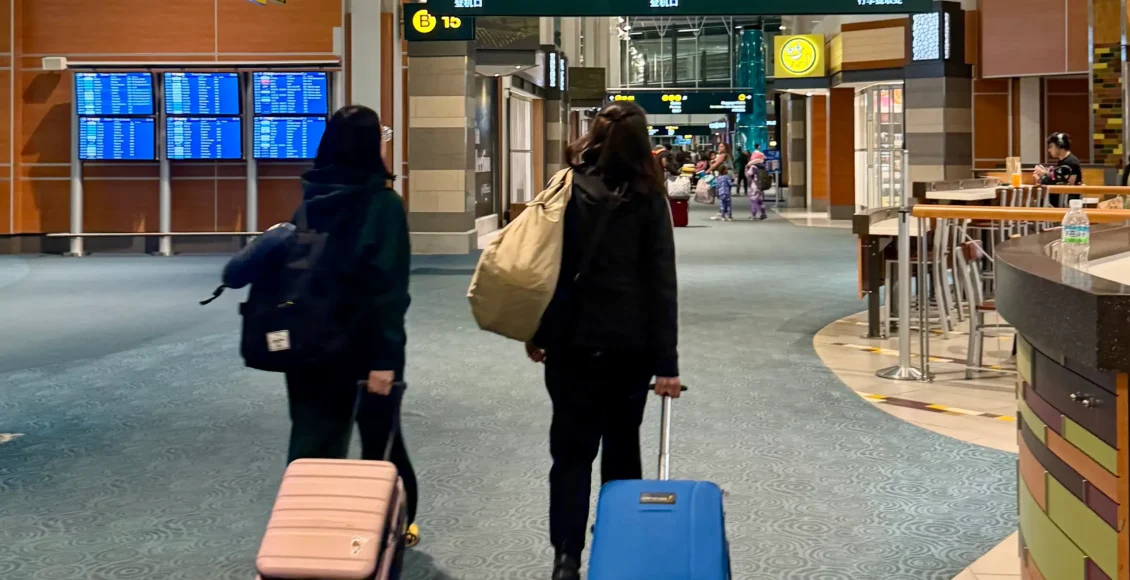
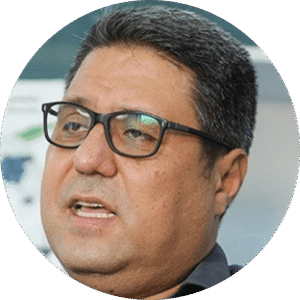 Iran’s Migration Observatory had a short lifespan. Launched in 2017 at Sharif University in Tehran, it was effectively shut down in 2024, after its building was confiscated by the new administration at the university. We were interested in learning more about its trajectory and its role in shaping migration narratives in Iran. The interview with Dr. Bahram Salavati, the former director of the Iran’s Migration Observatory, was conducted on July 14, 2025, by Azam Khatam and Omid Asayesh. Despite its closure, the Observatory’s website remains accessible, and its statistical reports and yearbooks continue to serve as valuable resources for migration research in Iran.
Iran’s Migration Observatory had a short lifespan. Launched in 2017 at Sharif University in Tehran, it was effectively shut down in 2024, after its building was confiscated by the new administration at the university. We were interested in learning more about its trajectory and its role in shaping migration narratives in Iran. The interview with Dr. Bahram Salavati, the former director of the Iran’s Migration Observatory, was conducted on July 14, 2025, by Azam Khatam and Omid Asayesh. Despite its closure, the Observatory’s website remains accessible, and its statistical reports and yearbooks continue to serve as valuable resources for migration research in Iran.
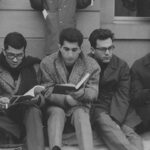
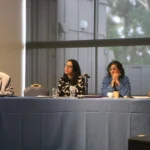
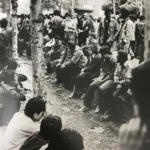

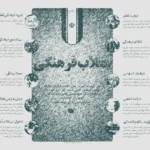
Comments are closed.